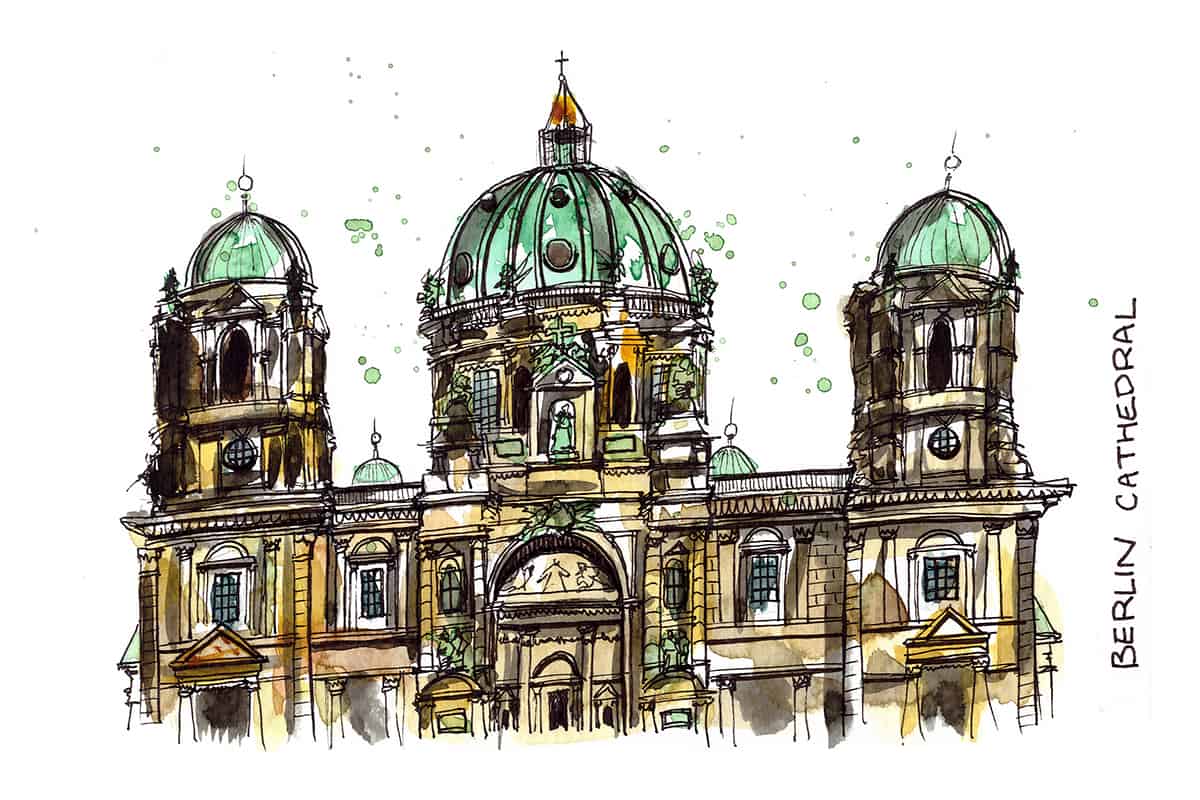Would you like to learn to capture the magic of an architecturally insane building, like the Duomo Cathedral in Milan or Notre Dame in Paris, or Westminster Abbey in London?
Do you think there’s absolutely no way you could capture those complicated details on a piece of paper with a pen?
Then read on dear sketchers…because if I can do it, you can absolutely do it too.
In this post, I will let you into the secrets I personally have discovered when it comes to sketching complicated architecture in easy ways so that it still looks convincing.
It all comes down to drawing squiggles really!
If you struggle with either the thought of sketching a complicated building or your efforts so far then this is the post for you. It’s also useful if you want to explore how other sketchers go about capturing ornate buildings.
After reading this post I hope you will feel more confident in trying to sketch buildings that have in the past felt too overwhelming to commit to paper.
You should have a better idea of where and how to start your sketch as well as how to add simple lines to convey complex ornamentation and create a convincing representation of the building you’re observing.
It’s easy to look at complicated architecture and believe you could never produce a decent sketch of it, or that it would just take far too many hours to even start sketching it.
After learning a few strategies I managed to break through this belief and become more confident that I can sketch tricky architecture to a standard I’m happy with. Therefore, I think the challenge of sketching complicated architecture is all in the mind!
I have used the strategies outlined in this post in order to sketch complicated buildings such as Westminster Abbey, Big Ben and Tower Bridge.
You can check out videos of me sketching them below:
Want to learn travel sketching in ink & watercolour?
Check out my course, Sketch Your Adventures and for a limited time get 50% OFF!!!
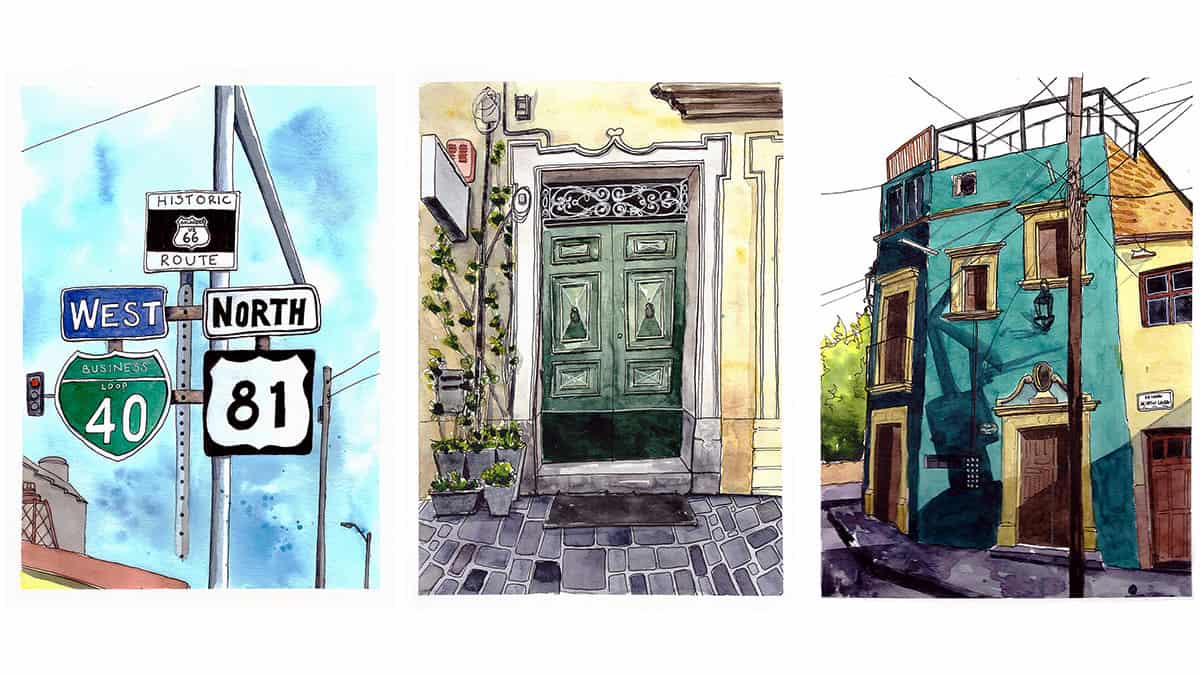
If you want to learn how I managed to simplify such buildings so I could sketch them convincingly, then read on.
I think my breakthrough in realising crazy ornate architecture could be communicated effectively through squiggles came when drawing the gothic architecture behemoth that is Cologne Cathedral.
I was so nervous that I couldn’t even bring myself to sketch it in my “real” sketchbook so I used my cheap sketchbook because of my fear of failure. I was a bit annoyed afterwards because it actually came out well and something I would not have minded having in my “real” sketchbook! In fact, I was quite pleased with it as my first attempt at such a building.
I thought to myself,
“Can it be this easy”?
“Does this really work”?
“Is this what other sketchers do”?
Turns out the answer to all of those questions is yes.
For those of you who prefer to watch a video, I talk through my basic process of approaching a sketch of complex architecture in this video while I sketch Berlin Cathedral. I go a little more in-depth in the article below than I do in the video.
What is a sketch?
The aim of sketching is to make a quick representation of the thing in front of you. When urban sketching, speed is a very useful skill to have as our environment shifts and our time can be constrained. The definition of a sketch is a quick informal drawing without too much detail.
Even the dictionary is telling us not to add too much detail to our sketch in the first place.
In my opinion, the most pleasing and successful sketches are the ones that represent the subject just enough so you can recognise it, but using the least amount of detail.
I personally quite enjoy spending a couple of hours on a more detailed drawing at home, yet still, refer to it as a sketch and sometimes as an illustration. It’s best to not get too hung up on terminology.
What do you want to achieve?
It’s good to know what you want your outcome to be though:
Do you want to do a quick, loose representational sketch?
Or
Do you want to do a more detailed illustration?
Knowing what you want to achieve at the end can help with where to start and the route you take.
When I started the sketch of Cologne Cathedral pictured below, I just wanted to do a quick and loose sketch that somewhat resembled the famous structure. I didn’t have much time and I just wanted to be confident and see what I could achieve.
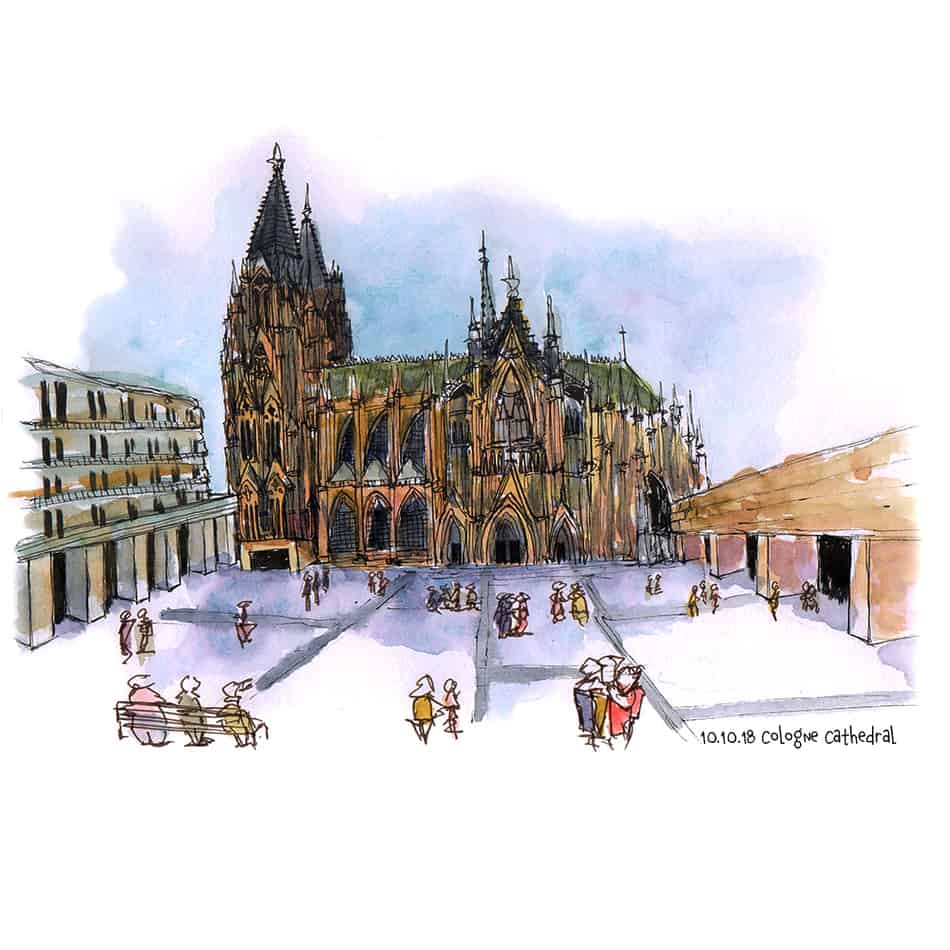
When I sat down to ‘sketch’ Big Ben, I knew I also wanted to be as quick as possible, and not too tight, but that I wanted a bit more of a polished end result.

How to Start
Sit in front of a building square-on (or find a photo of a building square-on) so you can only see the front or one side of the building facing you. This eliminates any tricky perspective issues and as such is a good angle to practice from.
Draw the large basic shapes lightly in pencil – rectangles, squares, triangles, circles – basic shapes only. Do not get hung up on any details at this point.
Once your big shapes are mapped onto the page you know everything is going to fit in and your proportions seem ok you can start thinking about the next stage.
Some of my favourite online classes
- Architectural Sketching with Watercolor and Ink – Alex Hillkurtz
- Expressive Architectural Sketching with Colored Markers – Albert Kiefer
- Artistic Watercolour Sketching: Dare to Sketch – Felix Scheinburger
- Urban Sketching for Beginners-Ian Fennelly
Observation Skills
Now you can start adding details. This is where I put my pencil down and pick up my pen.
Squint your eyes, or if your eyesight is not so great like mine, take your glasses off and draw your impression of what you’re seeing.
Is there an intricate relief on a panel? Just draw squiggly lines in the general shape of what you see.
Are there ornate statues on the building? In that case, just focus on what shape they are making. If a statue is sitting on the corner of a roof then think about the negative space the sky is making around it.
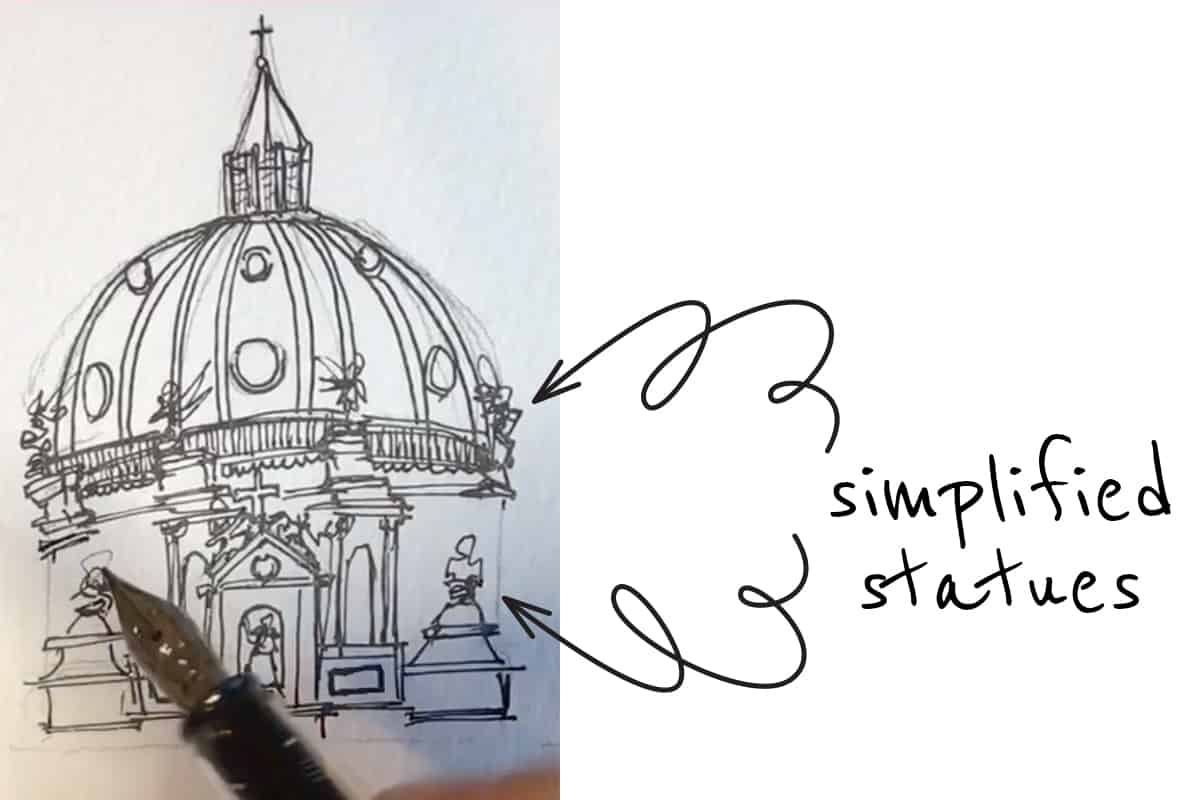
Try not to rationalise what you are seeing and then draw what you think it should like.
Forget the subject you are drawing entirely and just really observe the actual shapes you are seeing.
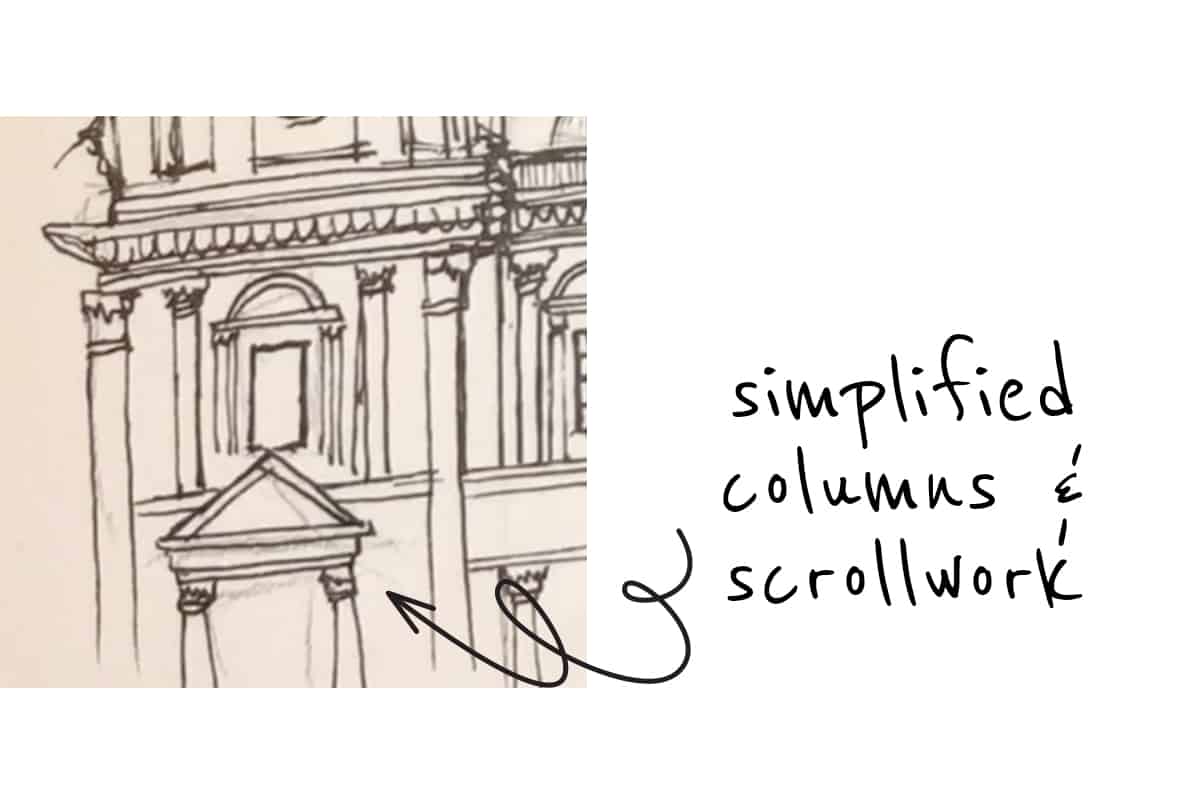
This is the absolute key. It sounds so easy but it isn’t. You need to train your mind out of identifying objects and then just drawing what you think they look like. This is so ingrained that you do not realise what you are doing. Once you start to intentionally practice shutting off that behaviour and focusing on observation, your sketching will begin to improve. With continued practice, it will then become a skill you no longer need to focus on quite so hard. It will become natural.
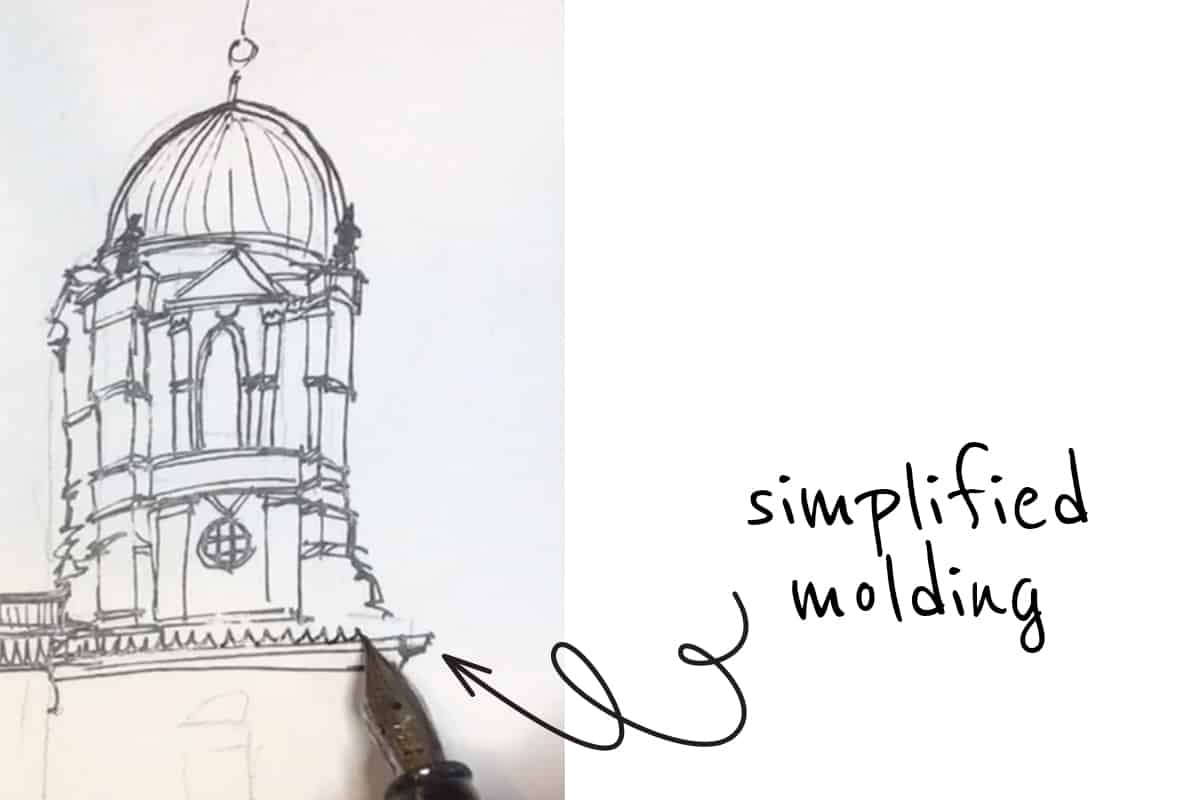
Filling out the details
Once the basic shapes are in with the pencil and I am filling in the details I tend to just work from top to bottom of the sketch. The main reason is so I avoid smudging my sketch with my hand.
If a building is symmetrical in areas I try to sketch one side (usually the left side as I am right-handed) and then the same on the opposite side right afterwards just to try and keep things even as possible.
I do everything freehand, I do not use a ruler or measure anything. I feel this takes the fun out of things and is not really in the spirit of ‘sketching’. If you are trying to render an accurate architectural illustration, then sure go for it. But when we are discussing sketching, and more specifically sketching on location, the idea is to develop strategies that allow us to capture our sketch as quickly as possible while still remaining pleasing to our own eye.
Check out my ebooks with hundreds of ink & watercolour travel sketches from all over the world. Get some inspiration for your next trip…
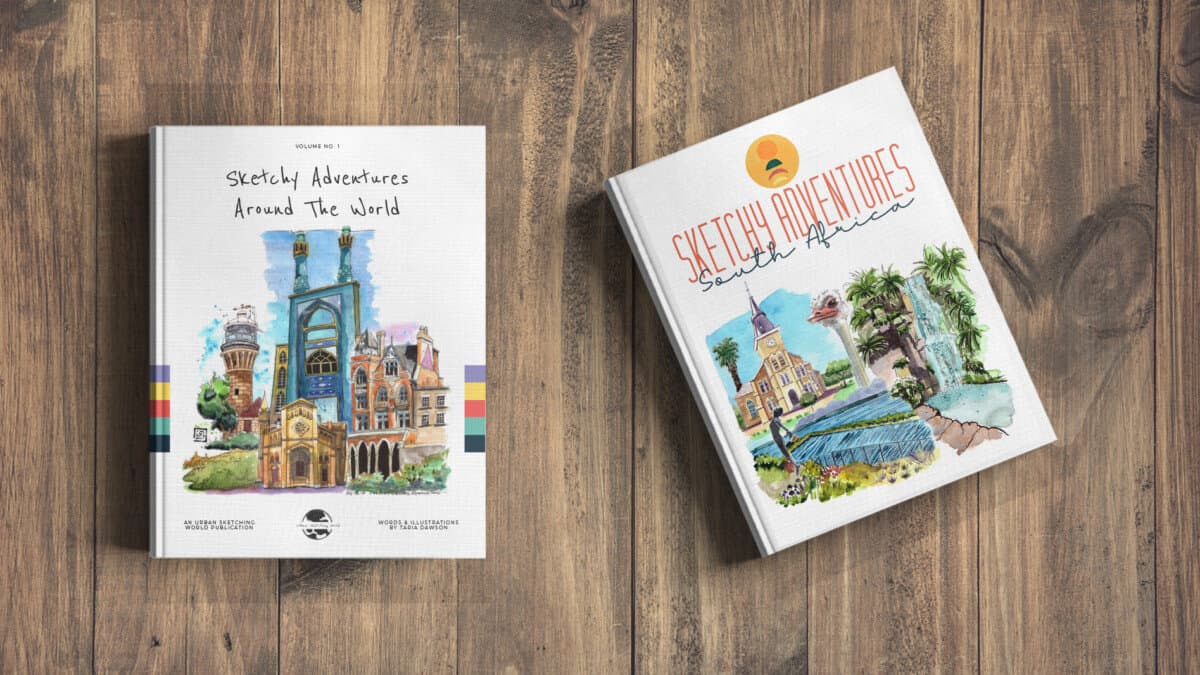
Finishing Touches
Once I have completed the details on my sketch, I like to squint my eyes at the subject and just move around my sketch thickening lines where there should more emphasis. This creates a sense of depth.
For example, the building may be facing you square-on but there may be sections which are closer to you and other sections of the buildings that are recessed. Adding thicker lines to the walls that are further forward will help create that sense of depth.
Also, use thicker lines where there are heavier shadows, for example, under window ledges.
Getting a sense for where your linework should be finer or thicker will come with developing your observational skill as well as practice.
Final Thoughts
If you enjoyed this post make sure to check out some of my other posts. You may enjoy my post about urban sketching architecture (with examples).
You may also enjoy my beginners guide to urban sketching, or for those of you who are a bit more advanced, perhaps you’re intrigued as to how you may make a few bucks with your urban sketching skills.
Don’t forget to join my newsletter below if you want urban sketching inspiration straight to your inbox. I email about twice a month and I will fill you in on exciting projects I’m working on (such as my book based on an epic travel adventure planned to take place in 2021).

